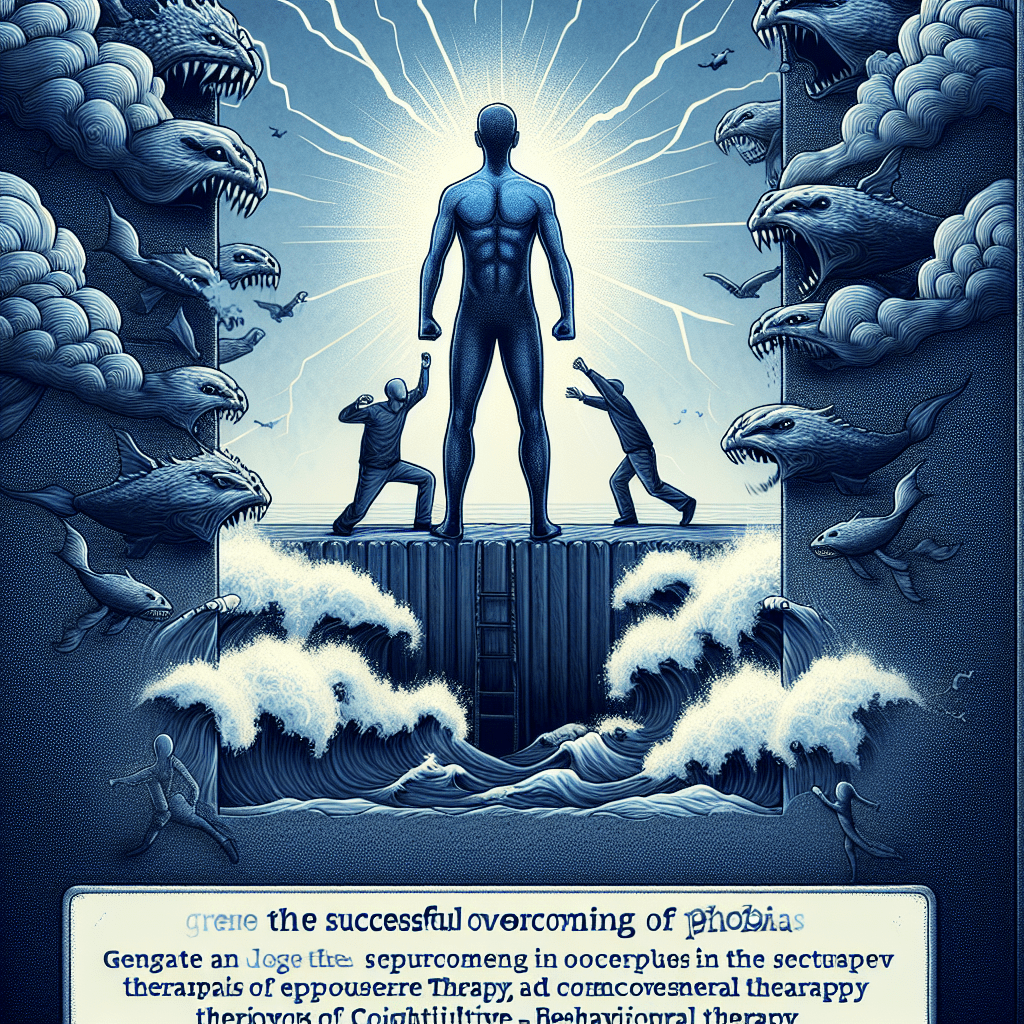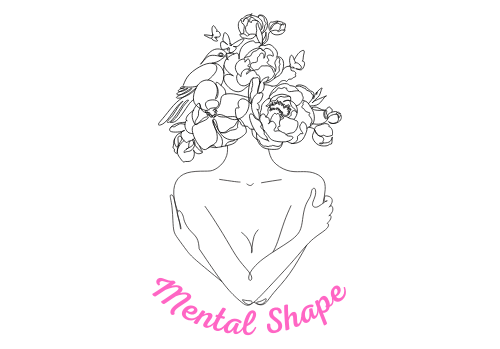Imagine living your life in constant fear, limited by the irrational grip of a phobia. From fear of heights to fear of spiders, phobias can be debilitating and incredibly challenging to overcome. However, hope lies in the form of various therapies specifically designed to combat these paralyzing fears. In this article, we will explore some of the most effective therapies available for individuals struggling with phobias, offering insights into how these treatments can help unlock a future free from fear and limitations.

Cognitive Behavioral Therapy (CBT)
Cognitive Behavioral Therapy (CBT) is a widely recognized and highly effective form of therapy for combatting phobias. CBT focuses on the relationship between thoughts, feelings, and behaviors, and aims to identify and change negative patterns of thinking. By challenging irrational thoughts and beliefs about phobias, CBT helps individuals develop healthier and more realistic thought patterns.
Exposure Therapy
Exposure therapy is a key component of CBT that involves gradually exposing individuals to their fears or phobias in a safe and controlled environment. This approach allows individuals to confront their fears in a gradual and systematic manner, which can help reduce anxiety and desensitize them to the phobia-triggering stimuli. Over time, exposure therapy helps individuals to develop a greater sense of control and confidence in managing their phobias.
Cognitive Restructuring
Cognitive restructuring is another important aspect of CBT for phobias. This technique involves identifying and challenging negative thoughts and beliefs that contribute to the phobia. By replacing these negative thoughts with more positive and realistic ones, individuals can reframe their perception of the phobia and reduce their anxiety. Cognitive restructuring helps individuals develop a more balanced and rational perspective, allowing them to overcome their phobias more effectively.
Relaxation Techniques
In addition to exposure therapy and cognitive restructuring, CBT often incorporates relaxation techniques to help individuals manage their anxiety and fear. These techniques can include deep breathing exercises, progressive muscle relaxation, and guided imagery. By practicing these relaxation techniques, individuals can learn to regulate their physical and emotional responses to the phobia, leading to a greater sense of calm and control.
Virtual Reality Therapy
Virtual Reality Therapy (VRT) is an innovative approach that utilizes computer-generated simulation to expose individuals to their specific phobias in a virtual environment. This technology allows individuals to experience realistic scenarios related to their phobias in a safe and controlled setting.
Simulated Exposure
Simulated exposure in VRT involves using virtual reality equipment to recreate phobia-inducing situations. For example, an individual with a fear of flying might be exposed to a virtual airplane ride. This simulated exposure helps individuals face their fears and gradually build resilience and confidence in managing their phobia.
Desensitization
VRT leverages the concept of desensitization, where individuals are repeatedly exposed to the phobia-triggering stimuli in a controlled manner. By being exposed to their fears through virtual reality, individuals can gradually reduce their anxiety and sensitivity to the phobia, leading to increased tolerance and a decreased fear response.
Real-Life Practice
One of the unique advantages of VRT is the ability to bridge the gap between virtual experiences and real-life situations. Following virtual exposures, individuals can progressively apply what they have learned from the virtual environment to real-life settings. This enables them to practice and test their skills in a safe and controlled manner, facilitating a smoother transition to facing their phobia outside of therapy.
Systematic Desensitization
Systematic Desensitization is a therapeutic approach that aims to reduce anxiety and fear associated with phobias through a gradual and systematic process of exposure.
Gradual Exposure
Systematic desensitization involves exposing individuals to the phobia-triggering stimuli in a step-by-step manner, starting with less anxiety-provoking situations and gradually progressing to more challenging ones. This gradual approach allows individuals to build resilience and confidence while minimizing the overwhelming feelings of anxiety that can often accompany facing a phobia head-on.
Anxiety Hierarchy
To facilitate gradual exposure, therapists often work with individuals to create an anxiety hierarchy. This hierarchy is a personalized and structured list of situations or stimuli related to the phobia, ordered from least to most anxiety-provoking. By gradually exposing individuals to each item on the hierarchy and ensuring they are able to manage their anxiety, they can progressively overcome their phobia.
Relaxation Techniques
Similar to CBT, systematic desensitization often incorporates relaxation techniques to help individuals manage their anxiety during the exposure process. Relaxation techniques such as deep breathing, progressive muscle relaxation, and mindfulness can help individuals calm their mind and body, making it easier to cope with the anxiety that may arise during exposure.
Hypnotherapy
Hypnotherapy is a therapeutic technique that utilizes a trance state to access the subconscious mind and facilitate positive changes in thoughts, behaviors, and emotions.
Trance State
Hypnotherapy induces a trance state, which is a heightened state of relaxation and focused attention. In this state, individuals are more receptive to suggestions and open to exploring their subconscious beliefs and patterns related to their phobia. The trance state allows individuals to access and modify their thought processes at a deeper level, making it an effective technique for addressing phobias.
Positive Suggestions
During hypnotherapy sessions, therapists often provide positive suggestions to individuals in the trance state. These suggestions can be tailored to address the specific phobia and are aimed at promoting feelings of relaxation, calmness, and confidence. By replacing negative thoughts and beliefs with positive affirmations, hypnotherapy helps individuals reframe their perception of their phobia and cultivates a more positive mindset.

Eye Movement Desensitization and Reprocessing (EMDR)
Eye Movement Desensitization and Reprocessing (EMDR) is a therapy approach that focuses on processing traumatic memories and reducing the distress associated with them.
Bilateral Eye Movement
EMDR involves bilateral stimulation, typically in the form of eye movements, along with other auditory or tactile stimuli. This bilateral stimulation is believed to facilitate the processing of traumatic memories and emotional experiences. During EMDR therapy sessions, individuals follow the therapist’s hand or a moving object with their eyes while recalling distressing memories associated with their phobia.
Processing Traumatic Memories
While engaging in the bilateral eye movement, individuals simultaneously engage in reprocessing the traumatic memories and experiences related to their phobia. This process aims to help individuals develop a more adaptive understanding of the traumatic events and reduce the associated distress. By reprocessing the memories, individuals can essentially “unlock” and reframe the negative emotions and beliefs associated with their phobia, leading to a reduction in fear and anxiety.
Medication
Medication can be another tool in the treatment of phobias, particularly when used in conjunction with therapy approaches.
Anti-anxiety Medication
Anti-anxiety medications, such as benzodiazepines, can help reduce the symptoms of anxiety associated with phobias. These medications work by calming the central nervous system, thereby decreasing feelings of anxiety and promoting a sense of relaxation. However, it is important to note that medication alone is not typically considered a sufficient treatment for phobias and is often used in combination with therapy.
Beta-blockers
Beta-blockers are medications commonly used to manage physical symptoms of anxiety, such as rapid heart rate and trembling. While they do not directly address the underlying phobia, beta-blockers can help individuals manage the physiological manifestations of anxiety, allowing them to engage in therapy and face their fears with greater ease.
Antidepressants
Antidepressant medications, such as selective serotonin reuptake inhibitors (SSRIs), may be prescribed to individuals with phobias when there is a co-occurring depression or anxiety disorder. These medications can help regulate mood and reduce anxiety, making it easier for individuals to engage in therapy and work on overcoming their phobias effectively.
Dialectical Behavior Therapy (DBT)
Dialectical Behavior Therapy (DBT) is a type of therapy that combines elements of cognitive-behavioral therapy with mindfulness techniques. It is often used to treat individuals with phobias who also struggle with emotional dysregulation and self-destructive behaviors.
Acceptance and Commitment Therapy
DBT incorporates acceptance and commitment therapy (ACT), which focuses on accepting one’s thoughts and emotions without judgment and committing to actions that align with personal values. This approach helps individuals develop a greater understanding and acceptance of their phobias, fostering a mindset conducive to change and growth.
Emotion Regulation
Emotion regulation skills are a core component of DBT and are particularly valuable for individuals with phobias who may experience intense and overwhelming emotions. Through DBT, individuals learn strategies to identify, understand, and regulate their emotions effectively. This enables them to cope with the anxiety and fear associated with their phobia more adaptively.
Distress Tolerance
DBT also emphasizes distress tolerance skills, which are essential for managing intense emotions and difficult situations without resorting to self-destructive behaviors. By learning healthy coping mechanisms and developing a repertoire of distress tolerance techniques, individuals with phobias can navigate challenging situations related to their phobia while minimizing the negative impact on their wellbeing.
Group Therapy
Group therapy can be a valuable treatment option for individuals with phobias as it provides a supportive and empathetic environment where individuals can learn from one another’s experiences.
Exposure in a Controlled Environment
Group therapy sessions often incorporate exposure exercises in a controlled environment. Individuals can support and encourage each other while facing their fears and gradually confronting their phobias. This shared experience can help normalize the fears associated with phobias and reduce feelings of isolation or shame.
Support and Empathy
The group therapy setting fosters connections and provides a sense of belonging, as individuals with similar phobias can share their struggles, successes, and coping strategies. This support and empathy create a safe space for individuals to express their fears and concerns, and to receive validation and encouragement from others who understand firsthand what they are going through.
Art Therapy
Art therapy is a therapeutic modality that utilizes creative processes, such as drawing, painting, and sculpture, to support emotional expression and healing.
Expressive Outlet
Art therapy offers individuals with phobias a nonverbal and creative outlet to express their thoughts, emotions, and experiences related to their phobia. This can be particularly beneficial for individuals who may find it challenging to verbalize their feelings or have difficulty accessing and processing their emotions through traditional talk therapy alone.
Nonverbal Communication
Art therapy provides a unique means of communication, allowing individuals to express their experiences and perceptions through visual or tactile mediums. This nonverbal form of expression can help individuals explore and process the underlying emotions and beliefs associated with their phobia in a more intuitive and holistic way.
Neuro-Linguistic Programming (NLP)
Neuro-Linguistic Programming (NLP) is a therapeutic approach that focuses on the connection between neurological processes, language, and behavioral patterns, and how they can be changed to achieve specific goals.
Reframing Techniques
NLP utilizes reframing techniques to help individuals challenge and change their negative or limiting beliefs about their phobia. By reframing the way they think about their phobia, individuals can shift their perspective and develop a more positive and empowered mindset. This can lead to increased confidence in managing their phobia and a reduction in anxiety and fear.
Anchoring
Anchoring is another technique used in NLP to help individuals associate positive emotions or states with specific triggers or stimuli related to their phobia. By intentionally linking positive memories or emotions to the phobia-inducing stimuli, individuals can effectively change their conditioned responses. This process helps individuals rewire their associations and experience a more positive and calm response in the presence of their phobia.
In conclusion, there are numerous effective therapies available for combatting phobias. Cognitive Behavioral Therapy (CBT) offers techniques such as exposure therapy, cognitive restructuring, and relaxation techniques. Virtual Reality Therapy (VRT) utilizes simulated exposure, desensitization, and real-life practice. Systematic Desensitization incorporates gradual exposure, anxiety hierarchy, and relaxation techniques. Hypnotherapy utilizes a trance state and positive suggestions. Eye Movement Desensitization and Reprocessing (EMDR) involves bilateral eye movement and processing traumatic memories. Medication, such as anti-anxiety medication, beta-blockers, and antidepressants, can also be utilized alongside therapy. Dialectical Behavior Therapy (DBT) focuses on acceptance and commitment therapy, emotion regulation, and distress tolerance. Group therapy provides exposure in a controlled environment and support and empathy. Art therapy offers an expressive outlet and nonverbal communication. Neuro-Linguistic Programming (NLP) uses reframing techniques and anchoring. By exploring and combining these various therapeutic approaches, individuals can find the most effective strategy for overcoming their phobias and reclaiming control over their lives.

